Multi Shutter Calottes (MSC)
There is a shutter postitioned in front of each substrate position. This shutter can be opened or closed wirelessly.
During the production process - in the vacuum - at temperatures up to 200°C!
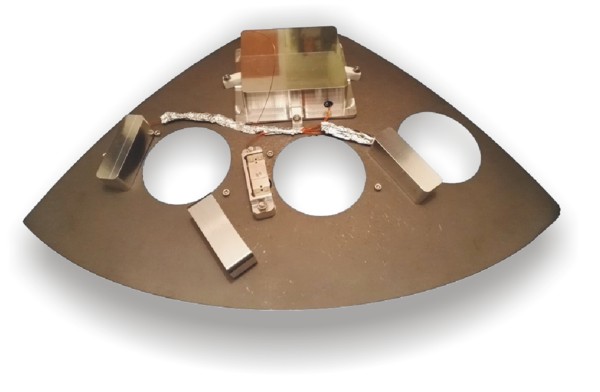
As the commands radio transmitted and no additional wires are needed, the concept can be applied on moving and rotating substrate holders. Therefore it is possible to use the multi functional calottes i.e. in APS or BAK coating machines.
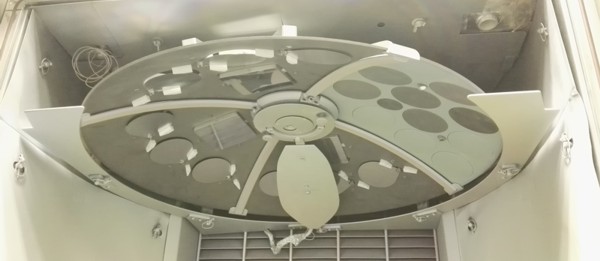
- Organizations with a wide spectrum of different products with comparable low parts per coating run.
- Organizations that would like to offer single piece production.
- Researcher and developer, who need to prepare bunches of samples with different parameters.
These customers can have a great benefit using the Multi shutter calotte. They can save time and gain capacity.
Besides the avantages concerning the quantity, also the quality of coatings can be increased drastically using the MSC:
It is i.e. possible to produce single layers with thicknesses below 10nm with an accuracy of better than 0.1nm - even only with quarz crystall control.
Controlling the MSC is done by a remote control or over the network of your coating machine. It can be possible to link the coating machine directly
with the MSC that you can programm it in your standard coating processes.
sigma-physik talks about serial and parallel coating processes.
In a serial coating process different products will be produced on different substrates one after an other.
The coated design is controlled as before by the coating machine itself.
But using the MSC, there is no need to open the chamber after one product.
The admistrator has only to close the shutter of the already finished product and opens a new subtrate position for the following coating process.
In the case of a serial coating process time can be saved by avoiding the following steps between two product processes: venting, cooling, sample changing, pumping and reheating.
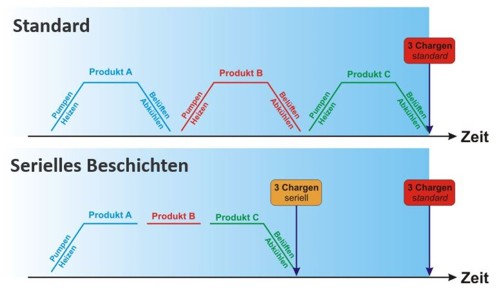
In a parallel coating process different products can be produced even at same time!
The MSC can be connected wirelessly to a seperate PC that itself again is connected to the coating machines network.
Therefore this PC can care for the opening and closing of shutters regarding to the machines status.
With that condition it is possible to run a rough dummy process on the coating machine while the MSC-PC controls the shutters to create previously calculated
designs - nearly in the same time!
The following graphic shows, how several different products can be produced at the same time!
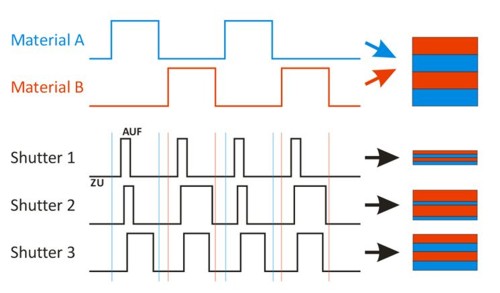
In the case of parallel coating time normally needed for complete coating runs can be saved:

Mainly in processes that are working with the quarz crystall thickness controll one knows that it can show false data in the first seconds after the
machines material shutter opened. In these seconds the thermal shock leads to wrong measurements and therefore to wrong estimated film thicknesses.
Using deposition rates of 0.5nm/sec one has already at shock times of 1-2 seconds a big effect. The result are wrong determined film thicknesses.
The developer is forced to do additional test runs to extract this effect and compensate it using spezial tooling factors. One can correct this effect,
but one can not get rid of it. In most cases the precise reproducibility is effect by this.
Using a MSC this critical phase in the beginning of each monolayer can be avoided by opening the MSC shutters some seconds after the machines shutters were
opened. By this the quarz crystall can reach its thermal equilibrium and produce reliable data. Only a constat and well measured material flux is used to
build the wanted layer. The reproducibilty of film thicknesses is highly precise.
Monolayers, even very thin ones (smaller than 15nm), can be produced very precise. Designs wich contain such a thin monolayer can be produced accuratly
alredy in the first run:
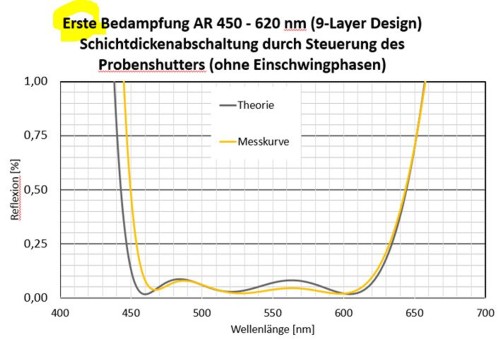
In this expamle one of the monolayers is thinner than 15nm. The first attempt is shown. Only the quarz crystall signal was used for thickness monitoring.
Electronic module
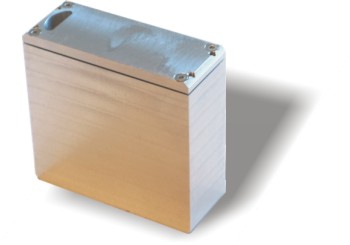
The electronic module of the MSC consist of aluminum and contains the electronic, the radio transmitter and the powersupply of the system.
The housing is vacuum tight, but can easily be opend to change the batteries.
The temperature of the electronic inside should not be above 90°C to avoid destruction of the batteries or electronic components.
To be used at temperatures of 200°C a special thermal insulation is needed (here)
remote controll
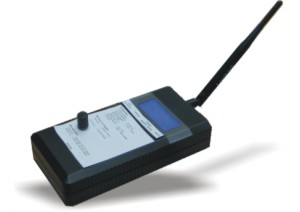
The remote control allows the user to open or close a certain shutter, or - in the case of the test glass changer - to change between different
test glasses. But also the MSC or the TGC can be parameterized.
At any time the remote control gives a state of the electronic module inside the vacuum chamber. These data consist i.e. of the actual temperature and
the actual battery voltages.
thermal insulation
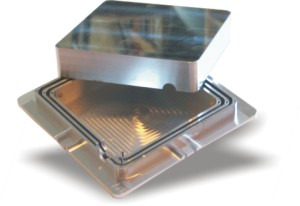
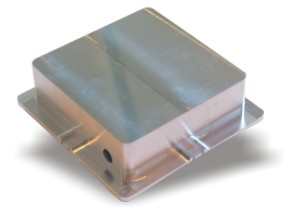
To use the system at high temperatures up to 200°C this insulation has to be used.
This "onion" like construction is shielding the infrared radiation in the vacuum and minimizes the heating of the electronic inside.
Therfore the system can be used for several hours at calotte temperatures up to 200°C.
The components of this setup are made of aluminum an can be delivered polished or gold coated. The efficeny of the insulation depends on the
kind of the applied heating and used heating power.
Individual design, CAD-construction and
production of calotte segments
We want to deliver our customers the most fullfilling their requirements.
Therefore the customer has to define the number, the size and the positions of the shutters and we construct and build it.
Each calottes is an individual device and optimal designed to the customers wishes!
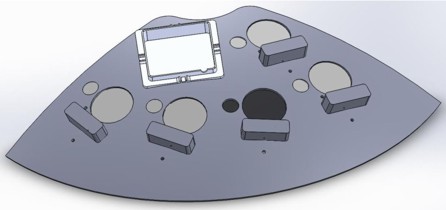
Design study 1: MSK - 5 x 75mm sample position with neighbouring 1"-test glasses.
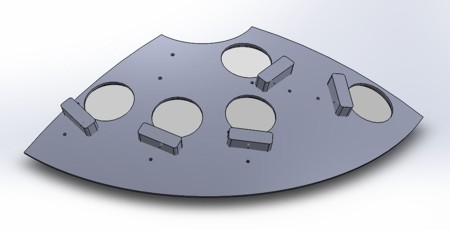
Design study 2: MSK - 5 x 90mm sample position.

Design study 3: TGW - plus 8 x 75mm sample positions.
Independently from test glass changers and multi shutter calottes we offer you to design, construct and manufacture each type of calotte
for your coating machines.
Dont't hesitate to contact us for further information.
